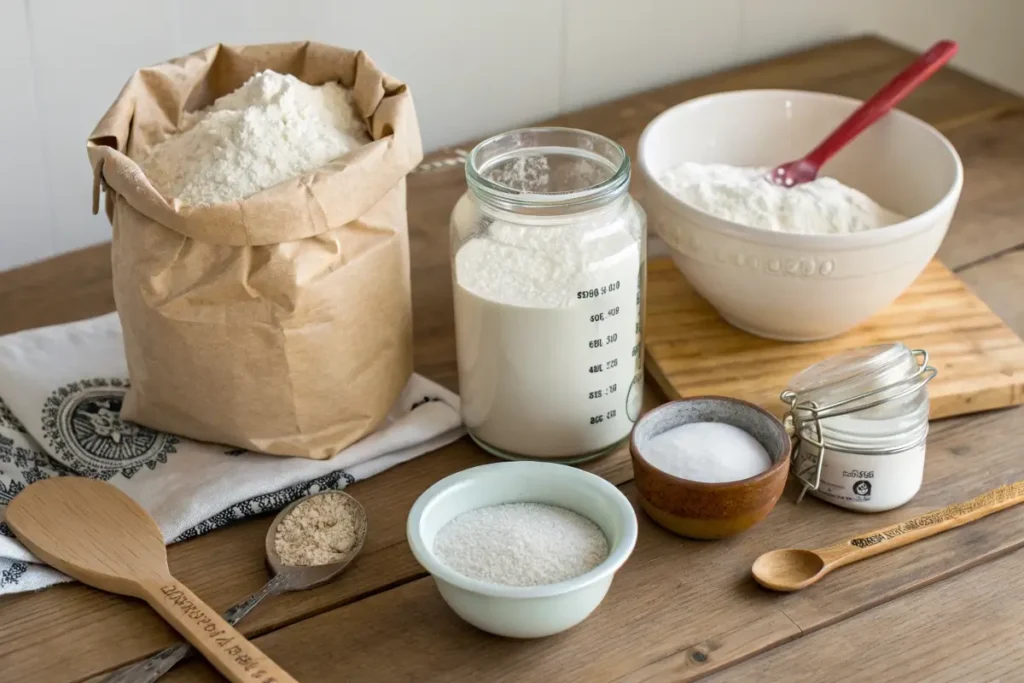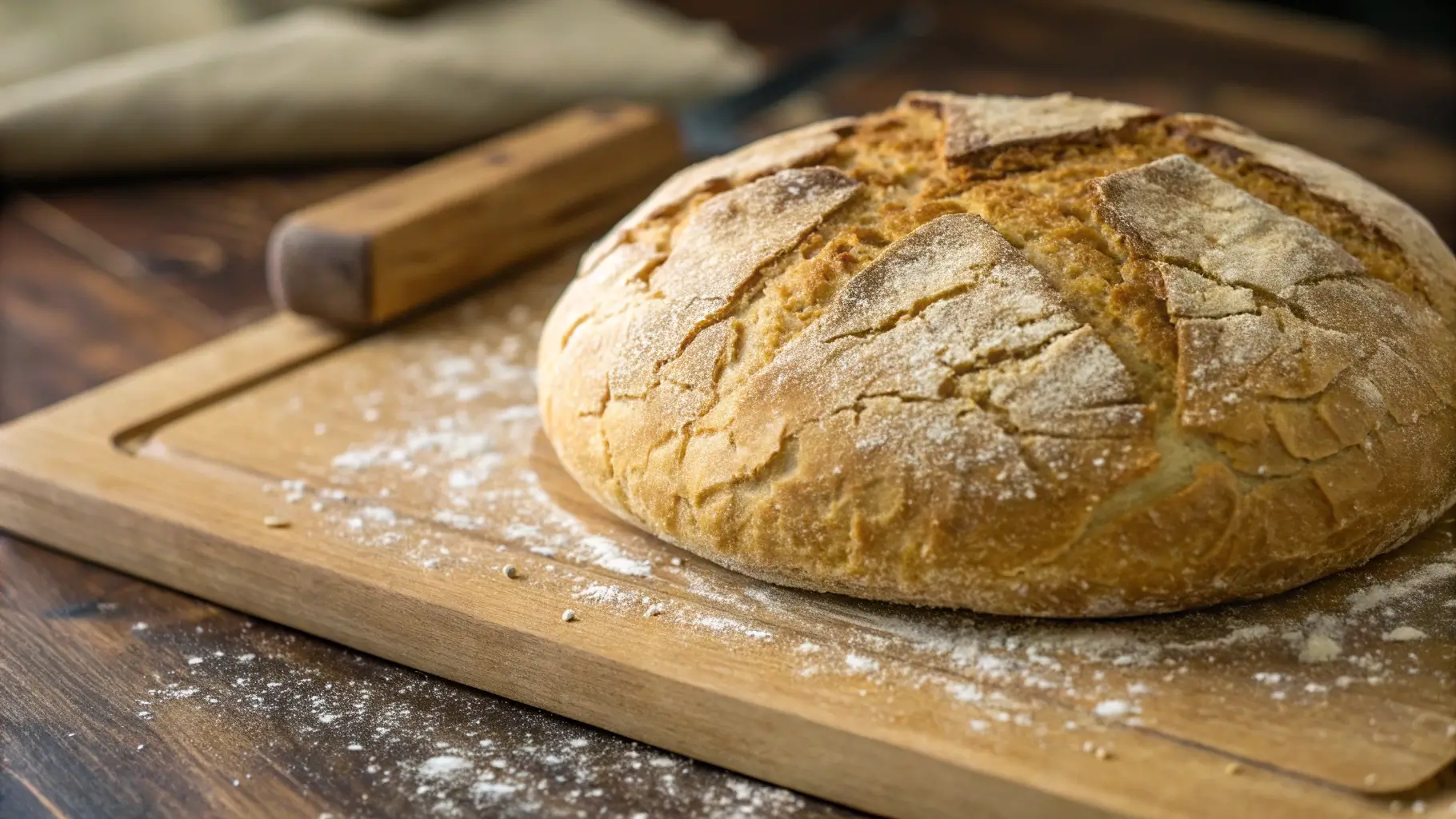Sourdough bread has taken the culinary world by storm, and for good reason. Its tangy flavor, chewy texture, and health benefits make it a favorite for both novice and seasoned bakers. Whether you’re perfecting a simple loaf or experimenting with exciting variations, the possibilities are endless. This guide delves into the best sourdough recipe ideas, providing step-by-step instructions, tips, and inspiration to elevate your bread-making skills.
With sourdough, every bake is an opportunity to create something truly unique. Its versatility means you can turn a basic dough into everything from pizza crusts to cinnamon rolls, adding your signature twist along the way. Keep reading to discover practical advice and expert insights that will make your sourdough journey as rewarding as it is delicious.
Mastering the Basics of Sourdough: Ingredients and Process
Before you dive into creative recipes, it’s essential to master the fundamentals. Sourdough baking relies on the careful balance of a few simple ingredients and techniques. With a bit of patience and practice, you’ll soon be crafting bakery-worthy bread at home.
Ingredients for a Classic Sourdough Loaf
Sourdough relies on natural fermentation, which gives it its unique flavor and texture. Below is a simple ingredient list to get you started.
| Ingredient | Amount | Notes |
|---|---|---|
| Sourdough Starter | 1 cup | Active and bubbly; fed 4-8 hours prior. |
| Bread Flour | 3 cups | High-protein flour works best. |
| Water | 1 ½ cups | Use filtered water for better results. |
| Salt | 1 tsp | Fine sea salt is recommended. |
Step-by-Step Process for a Basic Loaf
1. Activating Your Starter
Your sourdough starter is the heart of your bread. Feed it with equal parts flour and water by weight 4-8 hours before baking. Look for bubbles and a slightly tangy aroma to confirm it’s ready.
2. Mixing the Dough
Combine the starter, flour, water, and salt in a large mixing bowl. Stir until a shaggy dough forms. Let it rest for 30 minutes (a step called autolyse), which allows the flour to hydrate fully.
3. Kneading and First Rise
Knead the dough on a lightly floured surface for about 10 minutes, or until it’s smooth and elastic. Place the dough in a greased bowl, cover with a damp cloth, and let it rise at room temperature for 4-6 hours, or until it doubles in size.
4. Shaping and Second Rise
Turn the dough onto a floured surface and shape it into a boule (round) or batard (oval). Place it seam-side up in a proofing basket or a bowl lined with a kitchen towel. Let it rise again for 1-2 hours.
5. Baking
Preheat your oven to 450°F (232°C). For the best results, use a Dutch oven to trap steam, which helps create a crispy crust. Bake for 30-35 minutes, then cool on a wire rack before slicing.

Creative Sourdough Recipe Variations to Try
Once you’ve mastered the basics, it’s time to get creative! Sourdough dough is incredibly versatile, allowing you to transform it into a variety of delicious baked goods. Below are some standout ideas to inspire your next baking adventure.
Sourdough Pizza Crust
Few things are as satisfying as a homemade pizza, and using sourdough for the crust takes it to the next level. The natural fermentation process gives the dough a depth of flavor that pairs beautifully with any topping.
- Preparation Tips: After mixing the dough, let it ferment overnight in the refrigerator. This slow rise develops complex flavors and makes the dough easier to work with. Stretch it thin for a crispy crust or leave it thicker for a chewy texture.
- Toppings: While sourdough crust complements any topping, bold flavors like roasted garlic, fresh basil, and prosciutto shine. For something unique, try a white sauce base with mozzarella and caramelized onions.
Sweet Sourdough: Cinnamon Rolls
Who says sourdough has to be savory? Sweet sourdough recipes, like cinnamon rolls, balance the tanginess of the dough with rich, sugary fillings. These rolls are perfect for breakfast, brunch, or a decadent snack.
- Adapting the Dough: Incorporate sugar, melted butter, and vanilla extract into your dough for a sweeter base. After the first rise, roll out the dough and spread it with softened butter and a mixture of cinnamon and brown sugar.
- Proofing and Baking: Slice the rolls and let them proof in a greased baking dish for 1-2 hours before baking at 375°F (190°C). Finish with a drizzle of cream cheese glaze for an indulgent treat.

Savory Add-Ins: Cheese and Herbs
For a savory twist, elevate your sourdough bread with flavorful add-ins like cheese, fresh herbs, and garlic. These additions turn a simple loaf into a show-stopping centerpiece for any meal.
- How to Add Flavors: During the shaping stage, gently fold in shredded cheese (cheddar, Parmesan, or Gruyère work well) and chopped herbs like rosemary or thyme. To enhance the flavor, sprinkle a bit of garlic powder or cracked black pepper over the dough.
- Serving Suggestions: This bread pairs wonderfully with soups, salads, or a charcuterie board. Slice it thick for sandwiches or toast it for a luxurious breakfast.

Avoiding Common Sourdough Pitfalls
Even the best bakers encounter challenges when working with sourdough. By understanding and addressing common mistakes, you can improve your results and build confidence.
Mistake 1: Neglecting Your Starter
Your starter is a living organism that requires consistent care. Overfeeding, underfeeding, or using an inactive starter can lead to dense bread that doesn’t rise properly.
- Pro Tip: Always use a bubbly, active starter. If it’s been neglected, revive it with several feedings over the course of a day or two before baking.
👉 Troubleshoot your starter with this comprehensive guide.
Mistake 2: Improper Proofing
Proofing is one of the most crucial steps in sourdough baking. Under-proofed dough will result in a tight crumb, while over-proofed dough collapses easily.
- How to Tell It’s Ready: Perform the “poke test” by gently pressing your finger into the dough. If the indentation springs back slowly, it’s perfectly proofed.
- Optimal Conditions: Proof your dough in a warm, draft-free environment. If you’re short on time, place it in the oven with just the light on to speed up the process.
👉 Learn more about proofing techniques with this step-by-step guide.
How Sourdough Bread Promotes Health and Well-Being
Sourdough bread has become a beloved choice for home bakers seeking flavor and nutrition. By exploring creative Sourdough Recipe Ideas, you can enjoy the many health benefits that this ancient baking tradition offers. Its unique fermentation process not only enhances flavor but also provides advantages like improved digestion and better nutrient absorption.
Why Is Sourdough Healthier Than Regular Bread?
Sourdough bread stands out as a healthier alternative to regular bread due to its fermentation process. Understanding this difference is crucial as you experiment with new Sourdough Recipe Ideas at home. Unlike bread made with commercial yeast, sourdough uses natural bacteria and wild yeast, which offer several benefits:
- Easier to Digest: The fermentation process partially breaks down gluten and starch, making sourdough gentler on the stomach.
- Nutrient Boost: By reducing phytic acid, sourdough allows your body to absorb more iron, magnesium, and calcium.
- Steady Energy Levels: Many Sourdough Recipe Ideas result in bread with a low glycemic index, meaning it causes a slower rise in blood sugar compared to other bread.
When Should You Avoid Sourdough Bread?
While sourdough bread is nutritious and delicious, some individuals may need to adapt their Sourdough Recipe Ideas based on dietary restrictions. Here are a few situations where sourdough may not be suitable:
- Celiac Disease or Gluten Intolerance: Regular sourdough still contains gluten, so it isn’t safe for people with these conditions unless made with certified gluten-free flours.
- Wheat Allergies: If you are allergic to wheat, consider using alternative grains like spelt or rye when developing your Sourdough Recipe Ideas.
FAQs About Sourdough Bread
Many Sourdough Recipe Ideas use simple, wholesome ingredients like flour, water, and salt, with minimal added fats or sugars. The bread’s high fiber content also helps you feel full longer, which may reduce the likelihood of overeating.
One of the most common errors in sourdough baking is neglecting the starter. Without proper care, the starter can become inactive, impacting your ability to execute creative Sourdough Recipe Ideas. To keep it thriving, feed it regularly with equal parts water and flour and store it in a warm, draft-free area. 👉 Discover expert tips for maintaining a healthy sourdough starter.
The tangy, robust flavor of sourdough pairs beautifully with various ingredients. Consider these ideas to complement your Sourdough Recipe Ideas:
Savory Options: Use sourdough as the base for avocado toast, grilled cheese, or hearty sandwiches.
Sweet Pairings: Spread it with honey, almond butter, or jam for a sweet treat.
Side Dish: Many Sourdough Recipe Ideas include bread that works perfectly with soups, stews, and roasted vegetables.
Yes, sourdough can reduce inflammation due to the lactic acid bacteria produced during fermentation. These beneficial bacteria improve gut health, which plays a vital role in lowering systemic inflammation. Additionally, Sourdough Recipe Ideas that incorporate whole grains further enhance these anti-inflammatory benefits.

Pro Tips and Creative Variations for Sourdough Enthusiasts
Sourdough baking is not only rewarding but also offers endless opportunities for experimentation. By trying new Sourdough Recipe Ideas, you can expand your repertoire and enjoy a variety of baked goods.
Pro Tips for Perfect Sourdough Baking
- Master the Proofing Process: Ensuring the dough is properly proofed is key to a successful bake. Perform the “poke test” to check if the dough springs back slowly, indicating it’s ready to bake.
- Experiment With Flours: Many Sourdough Recipe Ideas involve using alternative flours like rye, spelt, or whole wheat for unique flavors and textures.
Creative Sourdough Recipe Variations
1. Sourdough Bagels
Turn your sourdough dough into chewy, flavorful bagels. After shaping the dough into rings, boil them briefly and top with sesame seeds or garlic before baking.
2. Sourdough Focaccia
Focaccia is one of the most versatile Sourdough Recipe Ideas. Drizzle the dough with olive oil, sprinkle with rosemary and flaky sea salt, and bake for a golden, flavorful bread that’s perfect for gatherings.
3. Sourdough Pancakes
Use your sourdough discard to create fluffy, tangy pancakes. Mix it with eggs, milk, and sugar for a delicious breakfast that minimizes waste.
Conclusion
Sourdough bread is much more than a food—it’s a celebration of tradition, creativity, and health benefits. By trying the Sourdough Recipe Ideas in this guide, you can enjoy everything from classic loaves to inventive recipes like focaccia and pancakes. Whether you’re a seasoned baker or just starting out, sourdough baking offers endless possibilities to explore and savor.

